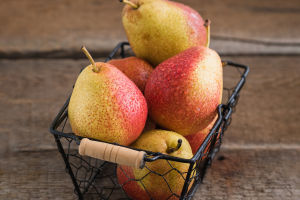Crispy Delights
French fries, a popular fried food, have become a favourite among food lovers around the world due to their crispy and delicious characteristics.
Despite the term "French" in its name, the origin and popularity of French fries extend far beyond France.
The Historical Origin of French Fries
There are many different theories about the origin of French fries, but the most widely accepted one is that they originated in Belgium. It is said that in the 17th century, residents from a small village in Belgium enjoyed cutting small fish into strips and frying them.
However, during winter, when the river froze and fishing became difficult, the residents turned to cutting potatoes into strips and frying. They discovered that this snack was extremely delicious. France introduced this delicacy in the late 18th century, and it quickly became popular in the 19th century.
The French called this dish "pommes frites," meaning fried potato chips. French fries gradually became a common food on the streets and in restaurants in France. Through the spread of immigrants and tourists in the early 20th century, French fries gained global popularity.
Production Process
The process of making French fries may seem simple, but creating perfect French fries requires exquisite skills and strict processes. First, selecting high-quality potatoes is crucial. Ideal French fry potatoes have a high starch, such as the Russet variety, which can form an ideal crispy texture on the outside and tender texture on the inside during frying.
Next, peel the potatoes and cut them into uniform strips. The thickness of the cut strips directly affects the taste and frying time of the French fries. Generally speaking, thin French fries are crispier, while thick French fries are softer on the inside.
Soak the cut potato strips in cold water for about 30 minutes to remove the starch on the surface so that they do not stick together when fried. After that, drain the potato strips thoroughly. This step is very important because moisture will cause the oil temperature to drop during frying, affecting the crispness of the French fries.
Frying is divided into two steps. First, pre-fry the fries at a low temperature (about 160 degrees Celsius) to cook and soften the inside of the fries. Then, remove the fries from the oil and drain them. When the oil temperature rises to a high temperature (about 190 degrees Celsius), re-fry them to make the surface crispy and golden. After re-frying, the fries need to be quickly sprinkled with salt for seasoning and can be eaten.
The Cultural Status of French Fries
French fries are not only a type of food but also a cultural phenomenon. Their simple and easy-to-eat characteristics make them one of the representatives of fast food culture. Whether in fast food restaurants, regular restaurants, or street stalls, French fries are a common choice for people. As a classic pairing with fast food such as hamburgers and fried chicken, French fries have become an important part of global food culture.
In Belgium, French fries are not just an ordinary dish but also an important part of the national culture. Belgian "friskets" (French fry stalls) are scattered across the country, and each stall owner has a unique secret recipe, making the French fries taste different but equally delicious. The Belgians have even set up a museum dedicated to French fries, showcasing the history and production process of French fries.
In the United States, French fries, along with hamburgers and hot dogs, form a typical American fast food combination. Fast food giants like McDonald's have promoted French fries to every corner of the world, making them a well-known iconic food.
In recent years, the diversification of French fries has continued to emerge, with various flavours and ingredients such as cheese fries, spicy fries, garlic fries, and more, catering to different tastes.
Moreover, French fries have also been integrated into the local food culture of many countries. For example, in the UK, French fries are often eaten with fried fish, forming the classic "fish and chips" combination; in Canada, "poutine," which consists of fries topped with gravy and cheese curds, is a beloved way to enjoy French fries.
As a simple yet extraordinary food, the charm of French fries lies not only in their delicious taste but also in the cultural stories behind them and people's love for food.
From small villages in Belgium to fast food restaurants around the world, French fries connect different cultures and allow people to experience the joy of food with every bite. Whether enjoyed alone or shared with friends, French fries always bring an indescribable sense of satisfaction.


